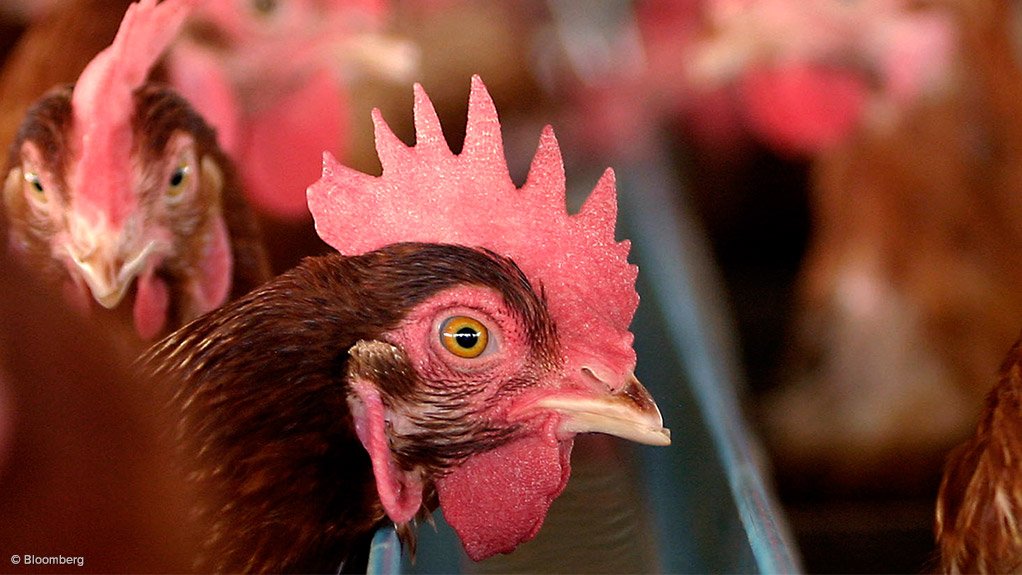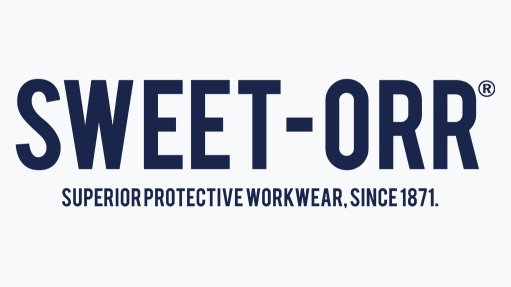Sapa estimates R3bn loss to poultry industry after 7.5m birds culled
In an update presented to the Portfolio Committee on Agriculture, Land Reform and Rural Development on October 20, the South African Poultry Association (Sapa) estimates that 30% of the South African poultry industry has been impacted on by the latest outbreaks of Highly Pathogenic Avian Influenza (HPAI).
Sapa broiler organisation GM Izaak Breitenbach said the current outbreak of the H5N1 and H7N6 strains of HPAI would cost the industry in excess of R1.8-billion, which was the amount of losses the industry experienced during the prior period of HPAI outbreaks in 2019, which saw three-million birds culled.
Sapa egg organisation GM Dr Abongile Balarane estimated that the losses to the industry could be as high as R3-billion, given that a 30% impact to the industry equated to 30% of its yearly revenue of about R12-billion.
South Africa has about 27-million layer hens that produce eggs on a daily basis, of which five-million had to be culled for both HPAI strains. Another 2.5-million broiler chickens also had to be culled this year, bringing the total amount of culled chickens to 7.5-million.
The H7N6 strain of the virus was first reported on June 1 on a farm in Mpumalanga. Department of Agriculture, Land Reform and Rural Development (DALRRD) animal health director Mpho Mojo confirmed that the H7N6 strain of the virus spread slower and was less deadly than its H5N1 counterpart, adding that many birds often survived the disease; however, it had nonetheless had a significant impact on the local poultry industry.
Additionally, she said that, because the H7N6 strain only occured in South Africa and was not closely similar to any other AI strains in the rest of the world, it meant that the few vaccines that had been developed against H7 may only have limited efficacy against South African strains.
Before any new vaccine can be registered, it needs to be carefully assessed and may require local trial work to confirm its efficacy, which may delay registration.
Balarane confirmed that locally produced vaccines were being developed but said this was a process that would take some time to complete.
Sapa anticipates that the poultry industry will have been reduced to 17.3-million layer hens by early 2024, down from 27.6-million layer hens in 2019 and 27.4-million in 2022.
Balarane said it would take the industry 17 months to recover lost production, with farmers intending to focus on recouping the 30% impact on the poultry industry next year.
Since HPAI first became a widespread problem in South Africa in 2017, more than 13-million birds had been culled.
With local poultry production comprising 95% caged operations, 1% barn systems and 4% free range systems, it means that most chickens are in close proximity to each other and easily spread the disease.
Mojo noted that there were fewer cases of HPAI reported in areas where small-scale farmers had free-range operations and were based far from other farms.
Breitenbach highlighted that reported cases of HPAI had come down in October, compared with September, which was a positive indicator; however, a new case of the H7N6 virus having been reported in George in the Western Cape was giving rise to concerns that another outbreak would occur in the Western Cape.
HPAI outbreaks had in the year to date predominately been occurring in Gauteng, followed by Mpumalanga.
In fact, 95% of all broiler breeder chickens in Gauteng had been culled in the greater Gauteng region.
HPAI MITIGATION
Mojo explained that HPAI was introduced through emigrating wild birds, with factors such as high rainfall, the presence of wetlands, the presence of irrigated crops and wetlands and chicken density adding to the risk factors for flocks contracting HPAI.
She believed the most effective approach to ensure that HPAI did not spill over from wild birds to poultry flocks was to introduce strict measures to ensure wild and domestic birds do not come into contact, including by feeding birds undercover and removing large bodies of water in the farm’s surroundings.
The first cases of HPAI in South Africa were reported in ostriches in 2004, particularly in the Eastern Cape, however, it was not until 2017 that the H5 strain of HPAI became widespread among chickens.
Mojo said that, while South Africa was severely affected by HPAI, there were also outbreaks of the disease in many North American and European regions. Particularly, the DALRRD was concerned about cases in Asia where H7 and H5 strains of HPAI were being transmitted to people, which could give rise to another Covid-19 situation.
She added that the list of mammals affected by HPAI was growing, with countries having observed the disease mutating to infect deer, ferrets and cats.
Owing to the global stress HPAI had been causing, there had been increased talks globally to permit widespread vaccination, including for the H5 and H7 strains of the virus.
For example, the International Alliance for Biological Standardisation met in Paris in October 2022 to open the way for more widespread use of HPAI vaccines.
In Mexico, the H7 vaccine is mandated for use to eradicate the H7 virus.
Mojo explained that birds could still be infected and transport the virus; however, vaccines would allow for lower fatality rates and fewer birds needing to be culled.
However, what is important to consider with widespread use of vaccines is the risk that the HPAI can mutate and become endemic. Mojo elaborated that more mammals and humans become at risk of HPAI infection if the virus mutates, particularly once human-to-human transmission could occur.
DALRRD confirmed that while it was hesitant to authorise vaccination, especially since trading partners in the Southern African Development Community may cease trade once South Africa starts vaccinating chickens, it was confirming the safety and efficacy of vaccines having been developed.
Mojo pointed out that preliminary indications were that H5 vaccines were registrable and, once approved, distribution would only happen through registered veterinarians at farmers’ own cost and discretion – it would not be compulsory.
REQUESTING SUPPORT
Breitenbach lamented that the poultry industry was already taking strain owing to loadshedding, water supply interruptions, infrastructure failures, inflation in energy costs and high feed input costs, which were being exacerbated by the latest outbreak of HPAI.
He bemoaned the fact that farmers had not received any compensation for culling under the provisions of the Animal Diseases Act.
Breitenbach explained that some commercial layer producers (of table eggs) are not culling infected farms owing to costs, which extends the risks of the spread of the disease.
In many instances, farmers were awaiting approval on applications for exemption from culling, which was taking a long time owing to slow action by authorities.
Moreover, he said there was no insurance available for HPAI in South Africa owing to its high risk.
Responding to this, DALRRD acting agriculture production, biosecurity and natural resources management deputy director-general Dipepeneng Serage said the department simply did not have the funds to compensate producers for culling and that the compensation clause in related legislation on the matter states that government “may” compensate farmers for culling as a disease control measure, not as an incentive.
He added that farmers often do not adhere to basic biosecurity measures, such as restricting movement of flocks between farms and provinces. To this end, the department continues to clamp down on movement of poultry during AI outbreaks and train small-scale farmers on basic biosecurity measures.
OTHER SUGGESTIONS
Sapa proposed that a key action to mitigate against more losses in the poultry industry was fast-tracked approval of HPAI vaccines, as well as importation of fertile hatchery eggs.
The association also suggested importation of liquid and powder eggs for industrial use in bakeries, instead of them using shell eggs. This could increase the availability of shell eggs for consumers.
Sapa added Namibia was a viable alternative market that could supply South Africa with table eggs, especially considering that Namibia is HPAI-free.
To this end, Breitenbach confirmed that 53-million hatching eggs would be imported over the next six months to help cover shortages in the market, with the first eggs having arrived by air freight early in October.
Sapa is ultimately lobbying for the widespread use of vaccines and for producers to be compensated for culling.
The association would also like to see a disaster fund created to assist farmers who had experienced significant financial losses owing to HPAI.
Article Enquiry
Email Article
Save Article
Feedback
To advertise email advertising@creamermedia.co.za or click here
Comments
Press Office
Announcements
What's On
Subscribe to improve your user experience...
Option 1 (equivalent of R125 a month):
Receive a weekly copy of Creamer Media's Engineering News & Mining Weekly magazine
(print copy for those in South Africa and e-magazine for those outside of South Africa)
Receive daily email newsletters
Access to full search results
Access archive of magazine back copies
Access to Projects in Progress
Access to ONE Research Report of your choice in PDF format
Option 2 (equivalent of R375 a month):
All benefits from Option 1
PLUS
Access to Creamer Media's Research Channel Africa for ALL Research Reports, in PDF format, on various industrial and mining sectors
including Electricity; Water; Energy Transition; Hydrogen; Roads, Rail and Ports; Coal; Gold; Platinum; Battery Metals; etc.
Already a subscriber?
Forgotten your password?
Receive weekly copy of Creamer Media's Engineering News & Mining Weekly magazine (print copy for those in South Africa and e-magazine for those outside of South Africa)
➕
Recieve daily email newsletters
➕
Access to full search results
➕
Access archive of magazine back copies
➕
Access to Projects in Progress
➕
Access to ONE Research Report of your choice in PDF format
RESEARCH CHANNEL AFRICA
R4500 (equivalent of R375 a month)
SUBSCRIBEAll benefits from Option 1
➕
Access to Creamer Media's Research Channel Africa for ALL Research Reports on various industrial and mining sectors, in PDF format, including on:
Electricity
➕
Water
➕
Energy Transition
➕
Hydrogen
➕
Roads, Rail and Ports
➕
Coal
➕
Gold
➕
Platinum
➕
Battery Metals
➕
etc.
Receive all benefits from Option 1 or Option 2 delivered to numerous people at your company
➕
Multiple User names and Passwords for simultaneous log-ins
➕
Intranet integration access to all in your organisation



















